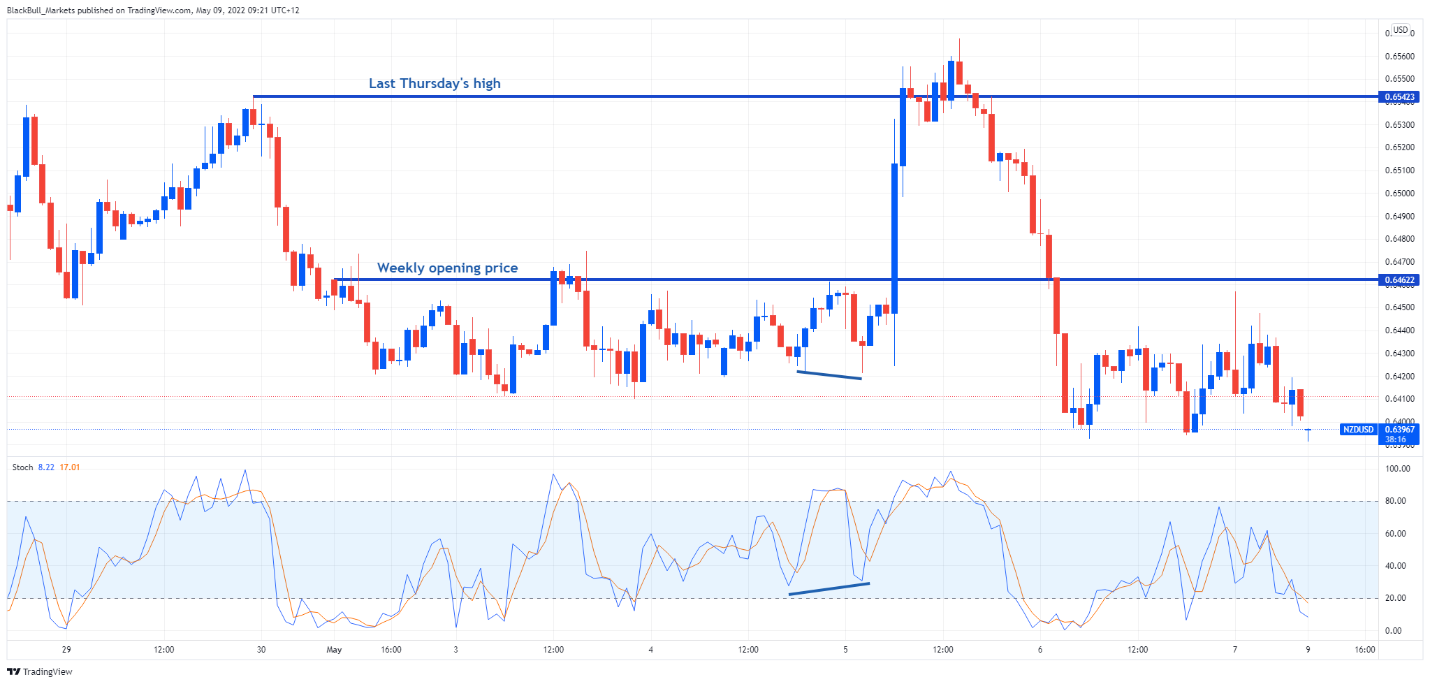While NZDUSD continued its bearishness last week, it showed a strong move up on Wednesday to produce a Thursday high. However, it sold off very quickly as it continued its drop during Thursday's London and New York sessions.
The pair mostly consolidated on Monday and Tuesday. NZ Unemployment Rate report was the only high impact news coming from New Zealand last week but failed to affect a substantial move, and the NZDUSD kept inside of Monday’s range.
Last week, the big fundamental impact came from the US, which had FOMC on Wednesday and Non-Farm Payroll on Friday. The former event is what finally broke the pair out of its range, pushing up over 130 pips in just a couple of hours. As noted above, the pair quickly reversed this climb and eventually ended the week lower by 0.77%. The NZDUSD has now racked up a monthly loss of just over 7.00%. The next two worst performing pairs on the monthly time scale are the GBPUSD and the AUDUSD, down by 5.63% and 5.48%, respectively.
In the chart, we see the weekly opening price, and last Thursday’s high noted. In the bottom window, we see the Stochastic indicator from TradingView.
Traders who use this indicator will try to look for overbought or oversold areas in price - gauging whether a sell or buy is unfolding when the indicator is showing extremes on either end of the window. It could also be used for divergence as we see a few hours before FOMC news. The indicator did not make a lower low, while the NZD/USD moved slightly lower than the low made in the previous session.
Next week’s high impact events
Events relating to the NZDUSD this week are the numerous speeches by US Federal Reserve officials. President of the Federal Reserve Bank of Atlanta, Raphael Bostic, speaks on Monday and Tuesday, likely to further dampen hopes for a 75 basis points hike from the Fed in June. The more hawkish officials such as John C. Williams (Federal Reserve Bank of New York) and Christopher Waller (Board of Governors) take the mic after Bostic, potential building a case against Bostic’s and Fed Chair Jerome Powell’s dovishness.
Thrown in the mix this week is the US Inflation Rate YoY for April. This report is due on Wednesday (UTC+4) and is expected to fall closer to 8.0% from 8.5% in March.
Risk Warning: Trading foreign exchange on margin carries a high level of risk and may not be suitable for all investors. The high degree of leverage can work against you as well as for you. Before deciding to trade foreign exchange, you should carefully consider your investment objectives, level of experience, and risk appetite. The possibility exists that you could sustain a loss of some or all of your initial investment and, therefore, you should not invest money you cannot afford to lose. You should make yourself aware of all the risks associated with foreign exchange trading and seek advice from an independent financial adviser if you have any questions or concerns as to how a loss would affect your lifestyle.
Recommended Content
Editors’ Picks

NZD/USD holds the rebound near 0.5550 after RBNZ's expected 25 bps rate cut
NZD/USD holds the rebound near 0.5550 after the RBNZ delivered the expected 25 bps interest rate cut to 3.5%. The pair reached a five-year lows earlier this Wednesday amid the global meltdown on the back of tariffs-led recession fears and escalating US-China trade war.

AUD/USD recovers further to 0.6000 despite escalating US-China trade war
AUD/USD is building on its recovery from its lowest level since March 2020, retesting 0.6000 in Wednesday's Asian trading. The pair's upside appears elusive as officials confirmed that the US will proceed with a sweeping 104% tariff on Chinese imports starting this Wednesday.

Gold price extends its consolidative price move near multi-week low
Gold price remains confined in a range near a multi-week low touched on Monday amid mixed fundamental cues. The widening global trade war and recession fears lead to an extended sell-off in equity markets worldwide. Moreover, bets for more aggressive Fed rate cuts and a weaker USD act as a tailwind for the bullion.

Trump's tariffs could be beneficial for Bitcoin: Here's why
Bitcoin dropped below $76,000 on Tuesday as the crypto market extended its decline after President Donald Trump imposed an extra 50% tariff on China. Despite the immediate price dip, several crypto experts suggest that Bitcoin could see tremendous growth if the US Dollar continues to plunge.

The Fed is looking at a hefty price level
We are still in thrall to tariffs, the faux-macro “data” driving markets. The WSJ editorial board advised other countries to take their tariffs to zero so that Trump’s “reciprocal” tariffs will have to be zero, too. Cute, but no cigar.

The Best brokers to trade EUR/USD
SPONSORED Discover the top brokers for trading EUR/USD in 2025. Our list features brokers with competitive spreads, fast execution, and powerful platforms. Whether you're a beginner or an expert, find the right partner to navigate the dynamic Forex market.
